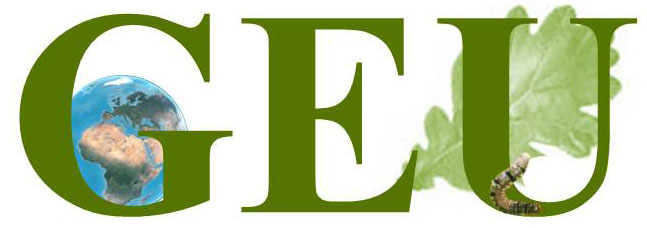Trees may benefit from advanced springs in cold humid areas but not in dry areas

Under accelerating global change, large changes are happening in the onset, duration and cessation of the vegetative season in extratropical ecosystems. These changes directly influence vegetation phenology. Numerous studies have shown a tight link between thermal conditions and leaf phenology, but there is still a lack of knowledge on the impacts of phenological changes on tree growth since the beneficial effects of spring warmth on growing season productivity can be dramatically offset by increasing carbon losses due to summer droughts or autumn warming. Tree stem wood is the primary long-term carbon storage pool in forests. A wood-oriented view on phenological impacts is thus essential for predicting changes in growth and productivity.
In a new study published in the journal Nature Ecology and Evolution, authors assessed the relationships between the start of the thermal growing season and tree growth across the extratropical Northern Hemisphere using 3,451 tree-ring chronologies and daily climatic data for 1948–2014. According to the study an earlier start of the thermal growing season promoted growth in regions with high ratios of precipitation to temperature but limited growth in cold–dry regions. “Path analyses carried out indicated that an earlier start of the thermal growing season enhanced growth primarily by alleviating thermal limitations on wood formation in boreal forests and by lengthening the period of growth in temperate and Mediterranean forests” comments Prof Eryuan Liang, from the State Key Laboratory of Tibetan Plateau Earth System, Resources and Environment (TPESRE), Chinese Academy of Sciences, China.

“Semi-arid and dry subalpine forests, however, did not benefit from an earlier onset of growth and a longer growing season, presumably due to associated water loss and/or more frequent early spring frosts. These emergent patterns of how climatic impacts on wood phenology affect tree growth at regional to hemispheric scales hint at how future phenological changes may affect the carbon sequestration capacity of extratropical forest ecosystems”, explains Dr. Gao from the same research institute.
Authors addressed these questions by investigating the relationships between the thermal start of season (TSOS) and tree radial growth across the extratropical Northern Hemisphere with correlation analyses and by identifying the dominant mechanisms controlling the relationships in path analyses for several regions with contrasting climates. A total of 3451 tree-ring width chronologies and daily climatic data for 1948-2014 were used to conduct these analyses.
Areas where tree growth benefit from an advanced TSOS are generally located at the higher latitudes (above 60°N), in central Europe, as well as in eastern and western coastal North America. These cool and humid regions are not strongly limited by water availability during the growing season. The regions with negative effects of advanced TSOS on growth were mainly located on the Colorado Plateau and the Tibetan Plateau, which correspond to cold and dry conditions, where forests are typically limited by a number of factors including low temperatures, drought events, and poor soil fertility.
The study further asked why a changing TSOS affects tree growth and tested a series of hypotheses: (1) an advanced TSOS will extend the vegetative season, so that trees have more time to grow; (2) an advanced TSOS will result in higher heat accumulation, so that trees can grow faster; (3) an advanced TSOS will alter the soil moisture conditions and thereby affect tree growth. Based on these hypotheses, authors proposed a path model and decomposed the effect of advanced TSOS on growth. The study found distinct latitudinal responses:
- In boreal forests of northern Asia and Europe, advanced TSOS enhanced tree growth primarily due to the alleviation of cold stress.
- In the temperate forests of central Europe and the eastern US coast, as well as in forests of the Mediterranean region and along the western US coast, advanced TSOS also enhanced growth, but primarily due to the extension of the growing season.
- In semi-arid forests of the Colorado Plateau and dry subalpine forests of the Tibetan Plateau, advanced TSOS did not benefit growth, as a longer growing season induces both atmospheric and soil drought there and increases the risk of tree exposure to spring frost
“This study reveals how climate affects tree growth through wood phenology and contributes to improving our ability to predict trends in the capacity of forests to sequester carbon at regional to global scales, especially in extratropical forest ecosystems” concludes Prof. Josep Penuelas from CREAF-CSIC Barcelona.
Reference: Gao, S., Liang, E., Liu, R., Babst, F., Camarero, J.J., Fu, Y.H., Piao, S., Rossi, S., Shen, M., Wang, T., Peñuelas, J. 2022. An earlier start of the thermal growing season enhances tree growth in cold humid areas but not in dry areas. Nature Ecology and Evolution. Doi: 10.1038/s41559-022-01668-4
